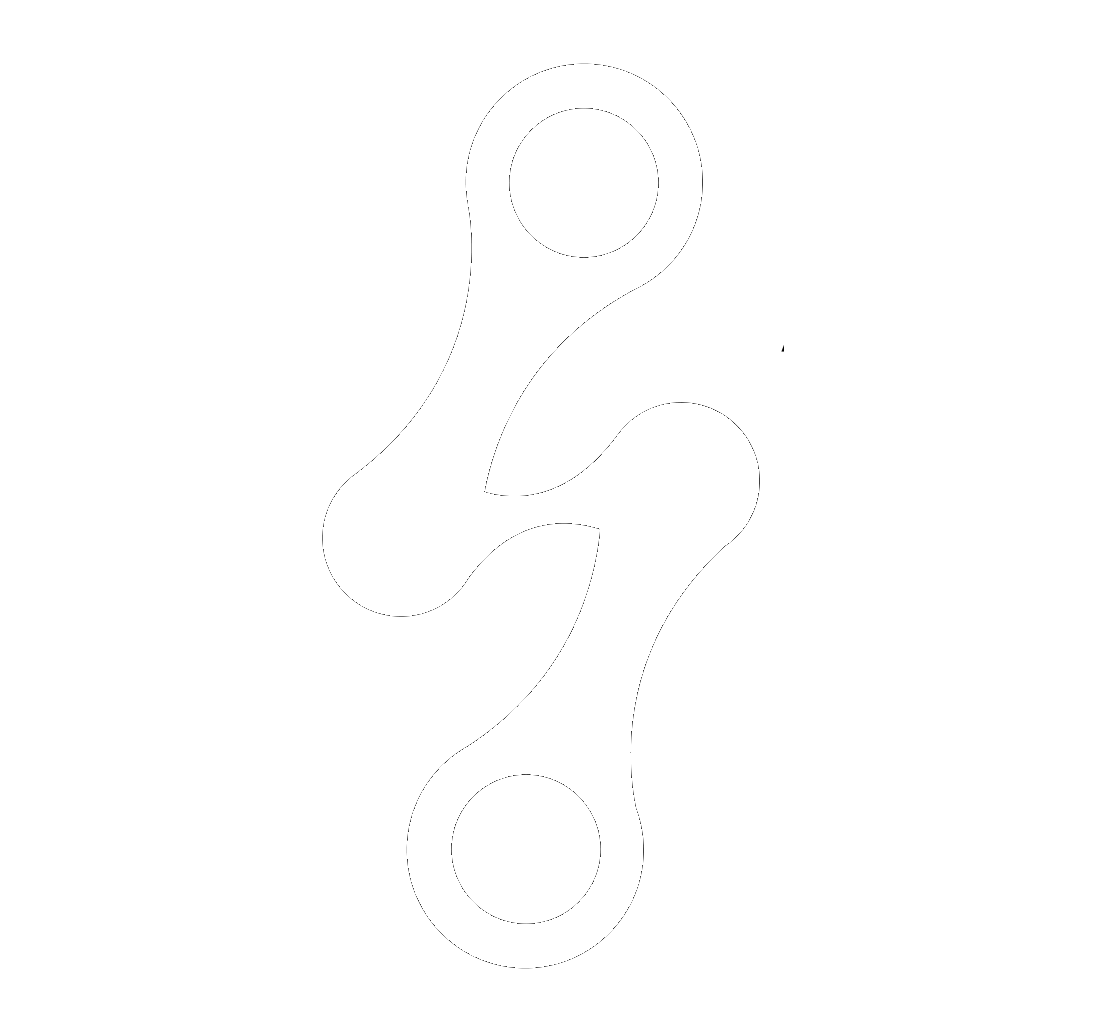I’m Nadia Lodroman
Stop Patching, Start Building: Modernizing Your Business with SaaS
Nadia Lodroman • 20 February 2025
Listen to Tresora and Ledgeron's chatting about this blog post:
Is Your SaaS Migration a Missed Opportunity?
Migrating from a legacy system to a modern SaaS platform is a big step, and it's tempting to want to make it as painless as possible. However, simply replicating your old ways of working in a new environment is a missed opportunity. Think of it like moving into a brand new house and arranging all your old, mismatched furniture in exactly the same way. Sure, you've moved, but have you really improved your living situation? This blog post outlines why a true modernisation requires more than just a "lift and shift" approach and how to maximise the value of your SaaS investment.
Re-Imagine Your Foundation: The Chart of Accounts
When migrating to a new ERP, resist the urge to simply replicate your existing Chart of Accounts (CoA). Over years, your CoA has likely become a patchwork of additions and modifications, reflecting past business changes and workarounds. While it might "work," it's probably not optimised for your current reality, let alone future growth. Take the time to analyse your CoA. Does it accurately reflect your current business structure? Does it provide the level of detail you need for reporting and analysis? A modern ERP offers the chance to build a clean, efficient CoA that supports your business objectives and scales with you. What got you here won't get you there.
Ditch the Lift and Shift Mentality
A SaaS provider promising a seamless "lift and shift" should raise a red flag. While technically possible, this approach ignores the fundamental differences between legacy systems and cloud-native SaaS platforms. Your business processes have likely been molded around the limitations and quirks of your legacy technology. SaaS solutions, built with modern architectures and often incorporating best practices, offer new ways of working. Simply replicating old processes in a new system means you're not leveraging the full potential of the technology. Instead, embrace the opportunity to re-evaluate your workflows and adopt more efficient, streamlined processes.
Cloud-Hosted Legacy is Not Modernisation
Don't be fooled by a legacy system hosted in someone else's cloud. While this might offer some incremental improvements, it's not a true migration. A genuine SaaS implementation is an investment in your future. It's a chance to not only upgrade your technology but also to analyze your business processes, understand how the new technology works, and adopt best practices. Many SaaS platforms are designed with built-in risk management and advanced compliance features, particularly around regulations like SOX. These features, often absent in legacy systems, can significantly reduce your business risk. Don't waste time and money on a migration that doesn't deliver real value.
Embrace the Disruption
Implementing new technology will disrupt your day-to-day operations. This is inevitable. However, this disruption should be viewed as an investment, not a cost. Make it count. Ensure your team understands the "why" behind the change and provide them with the training and support they need to adapt. The long-term benefits of a modern SaaS platform, including increased efficiency, improved data visibility, and enhanced scalability, will far outweigh the short-term disruption.
Leadership Sets the Tone
If you're in a leadership position, your attitude towards the new technology will significantly impact its adoption. Employees look to you for guidance. If you're resistant to change, they will be too. Demonstrate your enthusiasm for the new platform and communicate its benefits clearly and consistently. Emphasise that old ways of working are no longer sustainable and that embracing change is essential for future growth. Failure to adapt and modernise can lead to inefficiencies, compliance issues, financial losses, and ultimately, business failure. Investing in best practices, compliance, and control is not just a cost – it's an investment in your future. So, stop patching, start building, and embrace the power of modern SaaS.

by Nadia Lodroman
•
30 March 2025
Oracle FCCS has introduced a new "organisation by period" ownership engine, a significant enhancement allowing for more accurate and flexible financial consolidation.
This updated feature addresses the limitations of previous versions by enabling users to define ownership percentages that can change within a reporting period, rather than only at the period's start.
The sources highlight benefits such as increased accuracy, improved flexibility in handling mid-period ownership changes like acquisitions and divestitures, and enhanced auditability.
Ultimately, this development streamlines the management of complex ownership structures, leading to more reliable financial reporting and analysis for FCCS customers.

by Nadia Lodroman
•
24 March 2025
In the intricate landscape of corporate finance, the tax department often stands as a small but mighty force. While they may be one of the leanest teams within an organization, their impact reverberates throughout the entire company, influencing decisions made by CEOs, shareholders, investors, and even affecting relationships with customers and vendors. The accuracy and efficiency of their work are paramount. For years, tax professionals have relied on the familiar comfort of Excel spreadsheets to navigate the complex calculations of current and deferred tax provisions, track tax credits and losses, and manage tax liabilities across individual entities and consolidated groups. These spreadsheets, painstakingly crafted and meticulously maintained, have become trusted tools, a testament to the dedication and expertise of the tax team. However, the inherent limitations of manual spreadsheet-based processes are undeniable. The risk of errors, the time-consuming nature of recalculations, and the challenges of maintaining audit trails can create significant bottlenecks and potential liabilities. This is where Oracle Tax Reporting steps in, offering a powerful and secure solution to streamline and enhance the tax provision process. Why Oracle Tax Reporting? Powerful Tax Automation Engine: Oracle Tax Reporting's robust automation engine eliminates the need for manual calculations, significantly reducing the risk of errors and freeing up valuable time for strategic analysis. Recalculating tax provisions with the latest data, a task that could take hours or even days in Excel, can be achieved in minutes with 100% accuracy. Enhanced Auditability and Traceability: With built-in audit trails and comprehensive documentation, Oracle Tax Reporting provides complete transparency and traceability for all tax calculations. This ensures compliance with regulatory requirements and simplifies the audit process. Familiar Forms and Schedules: Oracle Tax Reporting offers a wealth of predefined forms and schedules that closely resemble the familiar Excel spreadsheets that tax professionals have come to rely on. This eases the transition and allows for a smooth adoption of the new system. Secure and Centralized Data Management: Oracle Tax Reporting provides a secure and centralized platform for managing all tax-related data, eliminating the risks associated with multiple versions of spreadsheets and ensuring data integrity. Efficiency and Accuracy: Imagine being able to recalculate your tax provision with updated data, and have the confidence to know the numbers are 100% accurate, within minutes. This is the power of Oracle Tax Reporting. Expert Consulting: A skilled consultant, equipped with both functional and business expertise, can play a pivotal role in implementing and optimising Oracle Tax Reporting. They can help tax teams leverage the full potential of the platform, ensuring a seamless transition and maximising efficiency. The Bottom Line: While Excel spreadsheets have served as a reliable tool for many years, the modern tax landscape demands a more robust and efficient solution. Oracle Tax Reporting empowers lean tax teams by automating complex calculations, enhancing auditability, and providing a secure and centralized platform for managing tax data. By embracing this powerful technology, tax professionals can focus on strategic analysis and value creation, knowing that their calculations are accurate, auditable, and completed efficiently.

by Nadia Lodroman
•
21 March 2025
Oracle Account Reconciliation (ARCS) is a powerful tool for streamlining your reconciliation processes. Its workflow automation rules offer significant time savings and ensure consistency. However, the "prevent" action, designed to halt workflow progression based on specific conditions, can be a double-edged sword. Misconfigurations can lead to unexpected roadblocks and frustration. Let's dive into how to get it right. The Power (and Peril) of "Prevent" Rules Workflow automation in ARCS allows you to define rules that trigger actions based on reconciliation attributes. The "prevent" action is particularly useful for enforcing compliance and quality standards. For example, you might want to: Prevent a reconciliation from being approved if supporting documentation is missing. Block a reconciliation if the period activity exceeds a certain threshold. Ensure critical fields are populated before moving to the next stage. However, the "prevent" action's strict nature means that even minor errors in rule setup can cause significant disruptions. Common Mistakes to Avoid Overly Complex Conditions: Complex rules with multiple conditions can be difficult to debug and maintain. Keep your conditions as simple and clear as possible. Incorrect Logical Operators: Using the wrong logical operators (AND/OR) can lead to unintended outcomes. Carefully consider the relationship between your conditions. Missing Edge Cases: Failing to account for all possible scenarios can result in rules that either fail to trigger when they should or trigger when they shouldn't. Lack of Clear Error Messages: Generic error messages provide little guidance to users. Make sure your custom error messages are specific and actionable. Testing Deficiencies: Insufficient testing can lead to rules that function differently in production than in development. Thoroughly test your rules with various data sets. Correct Setup Example: "Prevent" Rule Let's consider a scenario where you want to prevent a reconciliation from being submitted if an attachment is missing and the period activity is over $500,000 USD. Create Attributes: Set up a "Multi-Line Text Box" attribute for attachments with the "Required" option enabled for Preparers. Ensure you have an attribute that captures "Period Activity" as a number. Create a "Prevent Reconciliation Submission" Rule: Go to your format settings and create a new rule. Select "Prevent Reconciliation Submission" as the rule type. Set the condition to: "Attachment is missing AND Period Activity is greater than 500,000". Add a user-friendly message that will be displayed to the preparer if the rule is triggered, such as "Reconciliation cannot be submitted. Please attach the required documentation as the period activity exceeds $500,000." Testing: Thoroughly test the rule with various scenarios: Reconciliation with attachment and activity over $500,000 (should be allowed). Reconciliation without attachment and activity over $500,000 (should be prevented). Reconciliation without attachment and activity under $500,000 (should be allowed). Key Considerations User-Friendly Messages: Always provide clear and informative messages to the users when a "prevent" rule is triggered. This helps them understand why they cannot proceed and what actions they need to take. Thorough Testing: Testing is paramount. Create a comprehensive test plan that covers all possible scenarios and edge cases. Rule Maintenance: Regularly review your workflow automation rules to ensure they are still relevant and effective. As business processes change, rules may need to be updated or removed. By following these guidelines, you can effectively use workflow automation "prevent" rules in Oracle Account Reconciliation to enforce controls and improve the accuracy of your reconciliation process.
Phone IE: +353 (0) 86 96 1176
Phone RO: +40 749 390 230
Email: nadia@lodroman.com
© 2025
All Rights Reserved | Nadia Lodroman



